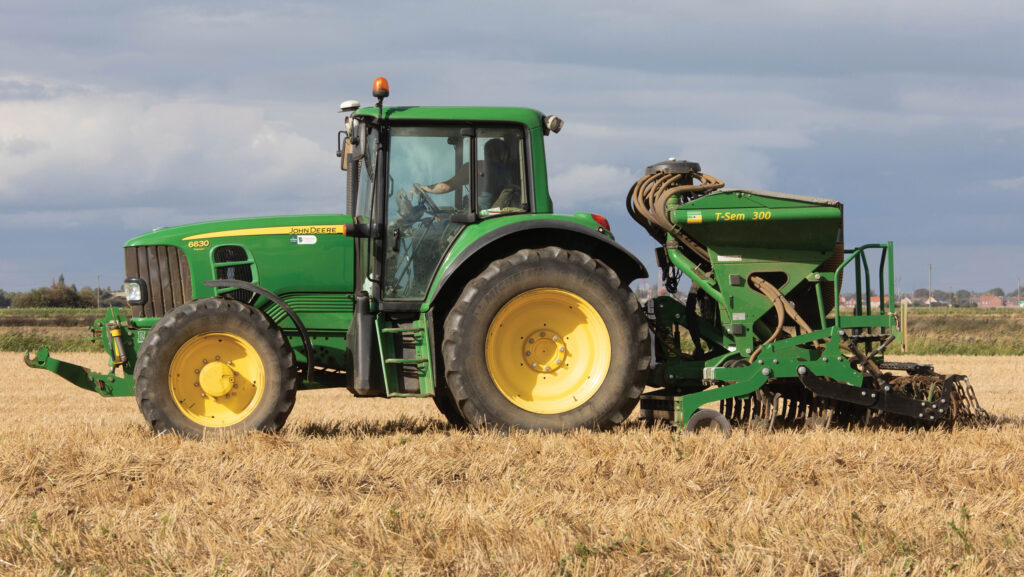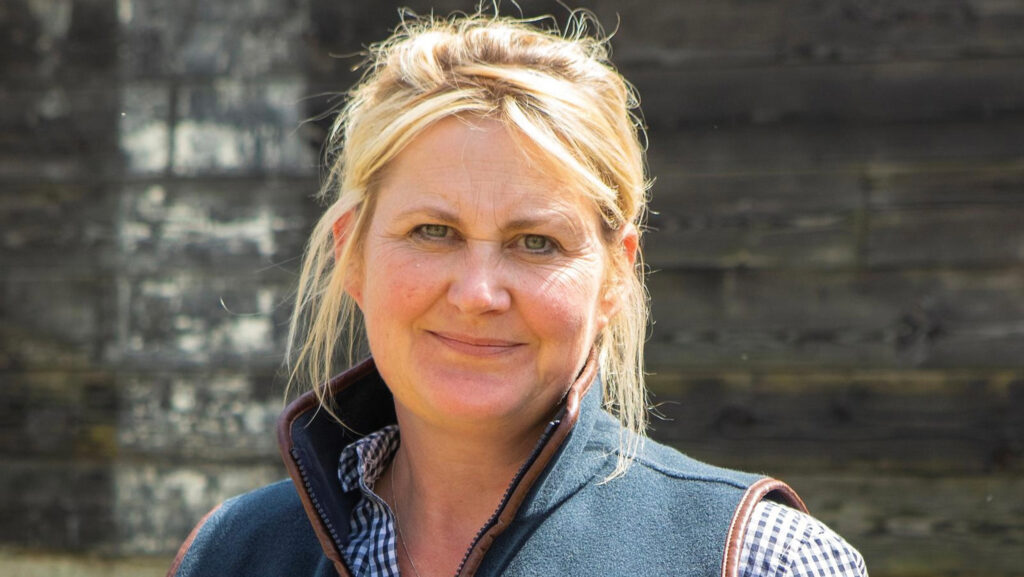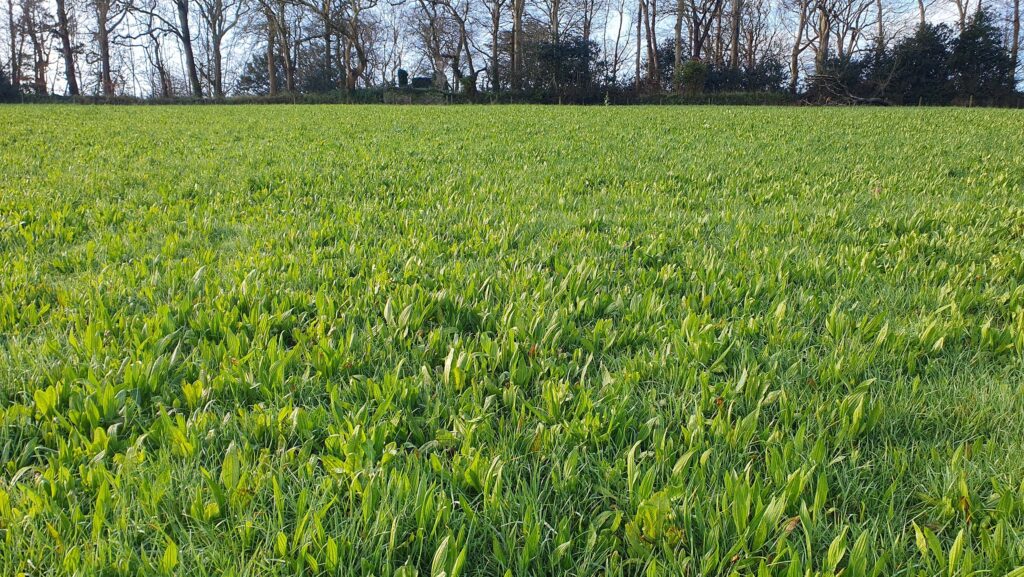Top tips for managing multispecies leys under SFI
 © Tim Scrivener
© Tim Scrivener The popularity of multispecies leys has risen as livestock farmers are drawn to their drought-tolerant benefits in a bid to keep something growing over warmer months, where grass typically struggles.
Now, with the introduction of actions like SAM3 herbal leys, as part of the new Sustainable Farming Incentive (SFI) scheme, the acreage is likely to increase further, believes Lisa Hambly, head of grassland and forage agronomy at Mole Valley Farmers.
“SAM3 is looking to be massively popular – we’ve seen some farmers [putting] 500 acres (202ha) into [it],” she says.
See also: How multispecies swards can improve production efficiency
However, despite the surge in popularity, Lisa says there are undoubtedly those who are concerned with the change in management that replacing ryegrass with multispecies brings.
To remain competitive and productive as a livestock forage (compared with traditional ryegrass leys), she says attention to detail is essential for establishing and managing these leys.

Lisa Hambly © Mole Valley Farms
Selecting a mix
Defra guidance makes no mention of specific compulsory species under SAM3, but a competitive crop starts with a well-balanced seed mix and careful species selection, says Lisa.
“Individual species suitability will vary from farm to farm, but the key things to think about are your soil type and location.
“For example, are you south facing, which means crops will burn off quickly? Or perhaps [in] a wetter area where plants are likely to sit in water for longer periods of time?”
She adds that it is also important to factor in which livestock the leys will be used for, and how it will be fed.
“Dairy cows will benefit from higher quantities of quality ryegrasses in the mix, whereas if [the ley] is designed to be long-term pasture for beef and sheep, a wider mixture including lots of herbs is likely to be a better option.
“If you’re planning on cutting it, rather than just grazing it, it’s probably wise not to put chicory into the mix as it’s more likely to bolt, and will go through plastic in bales as well.
“SAM3 isn’t a specific mixture – it’s all about tailoring it to your end use.”
Establish and maintain herbal leys (SAM3) – the facts
Action requirements: Establish and maintain herbal leys, which include a mixture of grasses, legumes and herbs. Existing leys can also be maintained to meet the action, but only if it is not already receiving payment under another Environmental Land Management scheme option.
Action aim: Provide varied root structures to help improve and maintain the soil’s structure, carbon, biology and fertility.
Payment: £382/ha.
Source: Defra
Sowing date and establishment
Before sowing a mix, it is vital to get soils in order, points out Lisa.
“Soil tests are critical; it seems obvious, but it’s an often overlooked action.
“Before you sow anything, it’s important to make sure your nutrient levels are matching up with those required of your proposed crop. And, if not, correct it before it’s sown.”
When it comes to drilling date, she stresses that this should be guided by soil temperature rather than a specific day on the calendar.
“Multispecies leys like nice, warm soils and plenty of moisture. The ideal timing is usually between June and August at the latest.”
Because the seeds in these mixtures are very small, drilling depth should be shallow, at a maximum of about 1-1.5cm to encourage better growth.
She adds: “If you’re overseeding, making sure that the competing grass is really short will also aid better establishment.”
Maintenance and management
Once leys are sown and established, correct management is essential to keep them productive for the length of the agreement: “For example, not cutting too short, or grazing past the growing point, as this will lose some of the more sensitive plants in the mixture.
“What tends to happen in this scenario is that some of the more dominant species just take over.
“It’s similar to managing [traditional] grazing and will need continual monitoring as the seasons go on,” she explains.
“It’s a really exciting time for farmers. There’s a lot of potential in multispecies leys and no doubt more resilience, with more dry matter a hectare, particularly in drier times.
“But getting both the mix and the management right are vital for success.”

© Mole Valley Farms
Case study: Francis Court Farm, Killerton, Devon
Over the past five years, David Ackland has been replacing his grassland with multispecies leys, and has been impressed with the benefits.
David and his wife, Mary, run a 240-head herd of spring block-calving crossbreds at Francis Court Farm, part of the National Trust Estate near Exeter in Devon.
With the herd rotationally grazing – optimising a grass-based diet – David decided to move towards multispecies leys in a bid to “keep green growing” on his sandy loam soils, which typically dry up in summer.
“Herbal leys also fit the ethos of the National Trust well, and is the direction they’re moving in,” he says.
Today, about 50% of the total grazing platform is sown to multispecies leys, comprising a mix of GS4 and SAM3 area.
In terms of establishment, if the field was previously grass, David sows a summer cover crop (such as a forage rape), then ploughs it in autumn to create a stale seed-bed.
He then goes over it with a light dose of glyphosate, followed by sowing the multispecies mix in September – a window he says has found to be much more effective for weed control.
“They say mixes ideally have to be [drilled] in April or August, but we’d struggle to do that by then. On our ground, mid-September is fine,” he adds.
Because the area is nearly all for grazing and the soils are very dry, a high percentage of chicory and plantain has worked well for David.
However, although there are a multitude of benefits, there are also pitfalls – namely limited weed control options.
This means careful management is required to ensure that leys remain productive for livestock.
He notes: “If you don’t clobber the weeds before you put [multispecies leys] in, you haven’t really got any options.”
He says he has noticed no difference to yield or fertility when cows graze on the leys.
Thinking about the future, David plans to expand the multispecies area, and tailor the mix to suit both cutting and grazing.
“Too much chicory isn’t great for cutting, so that’s something we’re going to be looking at.
“There will probably be a bit more plantain, sainfoin and lucerne. But the trouble with all herbal leys is what goes in doesn’t always stay, so it will need careful management,” he says.
“That said, because we’re so dry here, there are certain times of the year where [the multispecies leys] are the only thing that’s green.
“It definitely evens out the growth throughout the season. This is something we’re trying to do – graze as much as possible, and feed as little silage as possible – so it really helps.”
